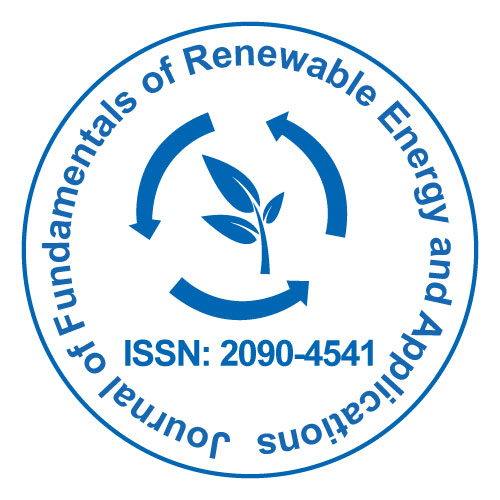
Journal of Fundamentals of Renewable Energy and Applications
Open Access
ISSN: 2090-4541
+44 1300 500008

ISSN: 2090-4541
+44 1300 500008
Jim P. Zheng
University at Buffalo, USA
Keynote: J Fundam Renewable Energy Appl
Freestanding flexible Si nanoparticles-multi-walled carbon nanotubes (SiNPs-MWNTs) composite paper anodes for Li-ion batteries (LIBs) have been prepared using a combination of ultra-sonication and pressure filtration. No conductive additive, binder or metal current collector is used. The SiNPs-MWNTs composite electrode material achieves first cycle specific discharge and charge capacities of 2298 and 1492 mAh/g, respectively. To address the first cycle irreversibility, stabilized Li metal powder (SLMP) has been utilized to pre-lithiate the composite anodes. As a result, the first cycle irreversible capacity loss is reduced from 806 to 28 mAh/g and the first cycle coulombic efficiency is increased from 65% to 98%. The relationship between different SLMP loadings and cell performance has been established to understand the pre-lithiation process of SLMP and to optimize the construction of Si-based cells. A cell containing the pre-lithiated anode is able to deliver charge capacity over 800 mAh/g without undergoing the initial discharge process, which enables the exploration of novel cathode materials.
It was also found out the SiNPs-MWNTs electrode with 3:2 Si/MWNT ratio exhibits the optimal balance between the high capacity of SiNPs and the high electrical conductivity and structural stabilization quality of MWNTs, leading to a high rate capability, high specific capacity, and cycle life surpassing the conventional slurry-cast SiNPs electrode. The reversible capacity is 1866 mAh/g (based on the total composite weight, the same below) at current density of 100 mA/g. After 100 cycles, the electrode retains capacity of 1170 mAh/g at 100 mA/g and 750 mAh/g at 500 mA/g.
Dr. Jim P. Zheng is SUNY Empire Innovation Professor at the Department of Electrical Engineering of University at Buffalo. He was Sprint Eminent Scholar Chair Professor at the Department of Electrical and Computer Engineering of Florida State University. He is the recipient of National Academy of Inventors Fellow, National Research Council Fellow, Army Research & Development Achievement Award, NASA Faculty Research Award, and Progress Energy Professional Development Award. He has published more than 170 articles in scholarly journals, and 140 papers in conference proceedings in the fields of energy storage, fuel cells, Nano-sensors, photonics, and thin-film growth, and been awarded 21 patents.